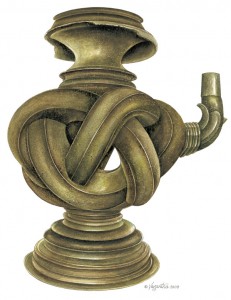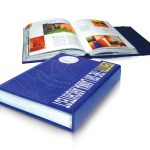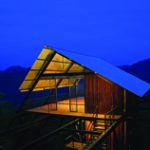-
Kandy A Sketch Book: A Journal of Frozen Memories…
October 2010
Weerakkodige Vasantha Perera
(Self-published, November 2010)
Jaffna – a sketch book, published in May 2008, was Vasantha’s first book which I incidentally picked up from a book store since the book seemed a refreshing twist to many of the books on display. Later I also snatched the opportunity to review his work for ‘The Architect’ magazine. This time around the review comes as a prelude to the artist’s second book which is due to hit the shelves in November 2010. Vasantha’s third effort according to him will be on Colombo; still not properly conceived, save for a few sketches, Vasantha is optimistic that he will be able to complete the work within the next couple of years.

Although Vasantha never hinted at it, his choice of work- or the trilogy if one may call it, presents to us in a platter a unique blend leading to a broad understanding of the diversified cultures of our little Island; Jaffna – a coastal alcove with a culture predominantly Hindu – Tamil, Kandy – mountainous highlands, largely reflecting a Sinhala Buddhist way of life and Colombo – coastal inland with a mishmash of all cultures and all religions. It is not wrong to say here then, that Vasantha’s collective work will be a useful source of learning for anyone who wants a quick reference to the rich tapestry of lives of our Island nation; landscape, people and the built environment. Vasantha’s comment, “I went to Jaffna as a Sinhalese and I came back as a Sri Lankan,” in one of his interviews says it all. The books allow us to partake in his deep appreciation and enjoyment of his surroundings.
Kandy – a sketch book, essentially an interesting collection of monochrome and colourful sketches accompanied by effortless descriptions, is yet another reflection of Vasantha’s constant yearning to establish a faithful dialogue with his environment.
The book opens with a landscape drawing embedded with the Temple of the Tooth Relic- the most visited historical edifice in the hill capital. Although the world renowned temple has been given due credit here, Vasantha opens our eyes to less frequented yet beautiful places in and around Kandy, sandwiched between these colourful pages.
The old yeoman’s house in the corner of one of the busiest streets in Kandy never looked so beautiful. Left to deteriorate beyond recognition due to lack of interest and lack of knowledge, Vasantha brings the building to its past glory through well informed conjectures leaving us in awe. The additions of the two brightly coloured ‘tuk tuks’ on either side of the building, circling the facade, is a metaphor according to him, of the fate our heritage has befallen owing to veneration of anything modern.
In yet another drawing we are forced to look beyond the majestic elephants of the vibrant ‘Kandy Perahera’. The paintings of the young dancers tell a story of agony and ecstasy, of hope and optimism, a tussle of tradition and young aspirations.
In the section dedicated to artefacts of Kandy, Vasantha portrays in inspiring detail, the skill of our very own craftsmen of yore. It only leaves us to admire the treasure trove of talents we once possessed and at the mean time instinctively prompts us to find answers to the questions, where has it all gone? Are we still capable?
No doubt then, the vividly illustrated pages of the book will etch a lasting impression on our minds and leave anyone to ponder over, even long after the book has been flipped through. Such is the force of the message Vasantha has tried to convey.
Reviewed by Zeena Marikkar
- Water pitcher (Pan Kothale) of unique design displayed at the Kandy Museum
- A gentleman peeping out from the lawyer’s complex
- Giragama Walawwa on Yatinuwara Street
- Waiting for the Perahera















